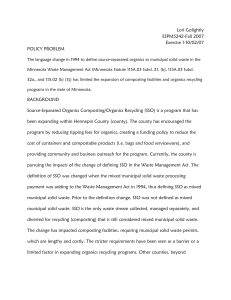1st Annual NYS Summit on Organics Management 3/5 Meeting
advertisement
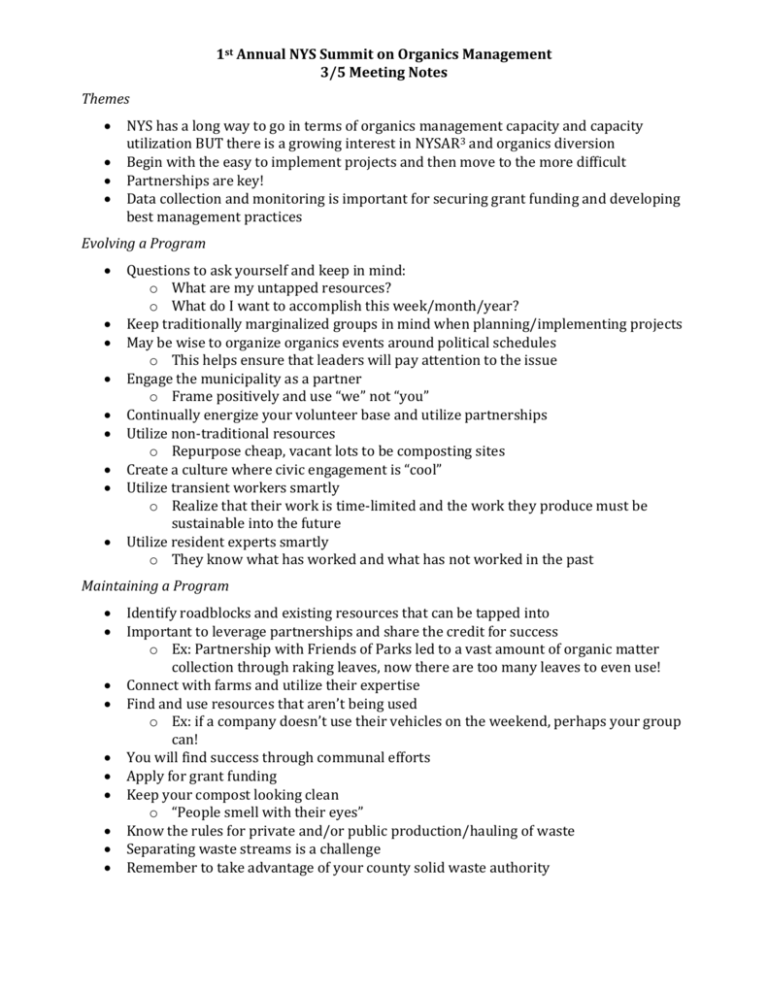
1st Annual NYS Summit on Organics Management 3/5 Meeting Notes Themes NYS has a long way to go in terms of organics management capacity and capacity utilization BUT there is a growing interest in NYSAR3 and organics diversion Begin with the easy to implement projects and then move to the more difficult Partnerships are key! Data collection and monitoring is important for securing grant funding and developing best management practices Evolving a Program Questions to ask yourself and keep in mind: o What are my untapped resources? o What do I want to accomplish this week/month/year? Keep traditionally marginalized groups in mind when planning/implementing projects May be wise to organize organics events around political schedules o This helps ensure that leaders will pay attention to the issue Engage the municipality as a partner o Frame positively and use “we” not “you” Continually energize your volunteer base and utilize partnerships Utilize non-traditional resources o Repurpose cheap, vacant lots to be composting sites Create a culture where civic engagement is “cool” Utilize transient workers smartly o Realize that their work is time-limited and the work they produce must be sustainable into the future Utilize resident experts smartly o They know what has worked and what has not worked in the past Maintaining a Program Identify roadblocks and existing resources that can be tapped into Important to leverage partnerships and share the credit for success o Ex: Partnership with Friends of Parks led to a vast amount of organic matter collection through raking leaves, now there are too many leaves to even use! Connect with farms and utilize their expertise Find and use resources that aren’t being used o Ex: if a company doesn’t use their vehicles on the weekend, perhaps your group can! You will find success through communal efforts Apply for grant funding Keep your compost looking clean o “People smell with their eyes” Know the rules for private and/or public production/hauling of waste Separating waste streams is a challenge Remember to take advantage of your county solid waste authority o They have a focus on diverting materials from landfills and have lots of educational tools available Future Considerations It is important to show the full cycle of food transformation o Partner with farms – many farms have great programming/tours available and if your local farms don’t have these things available they may be able to connect you with others who do Advanced composting training o Master composter courses o Develop resource sharing o As sites scale up, there is a need for more training Best management practices are in the process of being developed Remember to target source reductions and food waste prevention Challenges/Solutions Registering small organic sites o Solution: Work with the NYSDEC. Funding o Solution: Look into NYSDEC recycling/waste reduction municipal grant program. Submit a pre-application ASAP to reserve a place on the waiting list. Program offers reimbursement of up to half of the cost of waste reduction, outreach, education and capital projects. This grant can also fund recycling coordinator positions. Be creative with your grant writing and build things into grant language that are not explicitly stated! Break it down to stats: For every X% increase in residential recycling rates the city saved X% in tipping fees. Frame projects as an investment that produces a marketable product. Lack of Space o Solution: Partner with existing organizations and get creative with space. Some organizations may have certified commercial kitchens with space for a composting system. Find spaces within spaces (ex: schools or religious networks). Look into partnerships with Rails to Trails organizations. Vermicomposting is a space saving tactic Unenthusiastic Municipality o Solution: Money is oftentimes the issue here. County has limited resources. (see above funding) Also, show the County that you are willing to do the leg work. Organics Transportation o The proper equipment and transportation structure is still being explored Perception of vermin and odor o Solution: Option to create indoor composting facility. Use department stores that have gone out of business. Realistic scaling o Solution: Increasing participation o Solution: Go to farmers markets or church events and spread the word! You can also use these places as a collection point for food waste. Finding proper leadership and coordination o Solution: Create a team of leaders and replace them as necessary. This way there should never be a knowledge gap because one previous leader will always be present in the group Access to carbon o Solution: Partner with parks. Lack of equipment o Solution: Crowdsourcing, community foundations, Environmental Finance Center NYS Funding Guide for Sustainable Materials Management Permitting o Solution: Work with retired engineers or local chapters of the Society of Professional Engineers. Next Steps Keep in touch with Google Group Hold another NYS statewide event on organics Contact Cornell Waste Management Institute to get your compost facility of program on their online map.
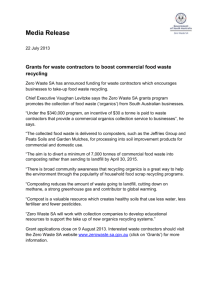
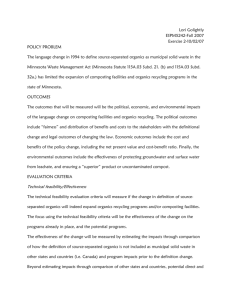
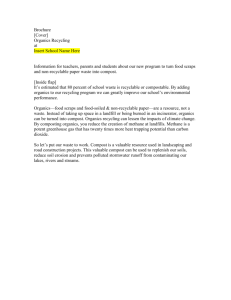
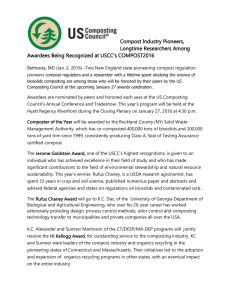
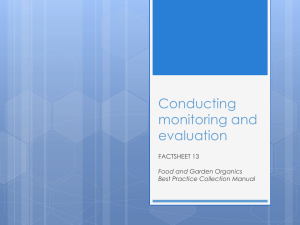
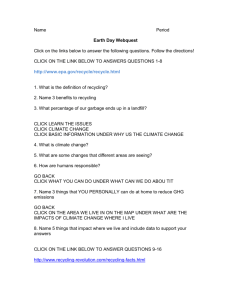

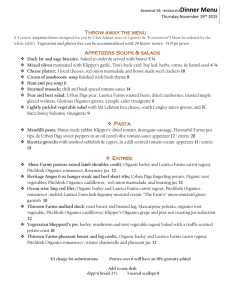
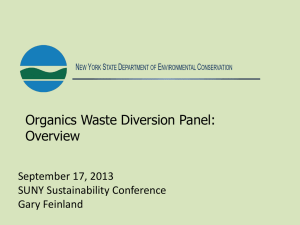
![School [recycling, compost, or waste reduction] case study](http://s3.studylib.net/store/data/005898792_1-08f8f34cac7a57869e865e0c3646f10a-300x300.png)

